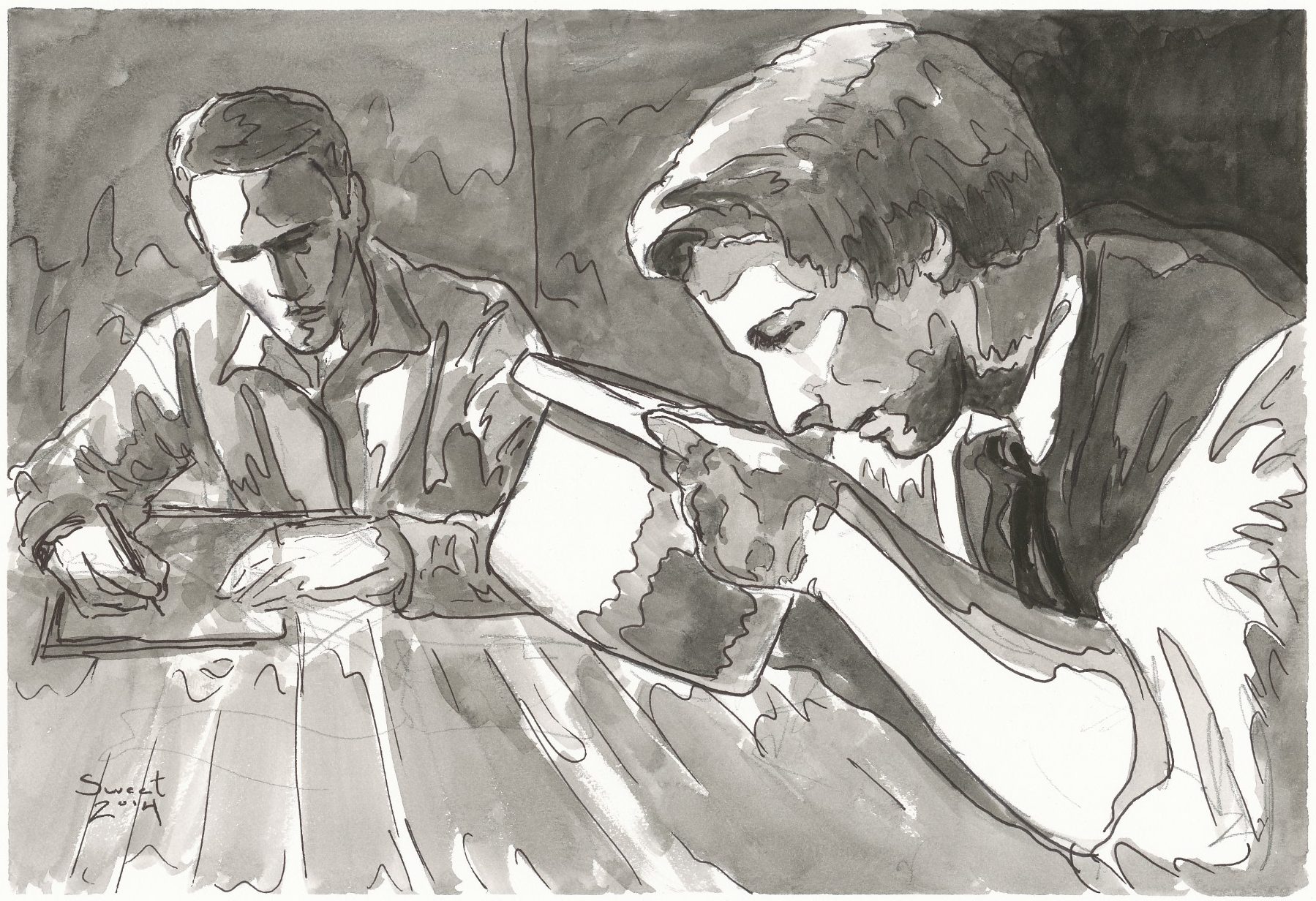
Translating with Oliver by Anthony Sweat
Written by guest blogger Chris Miller.
What can a crude animated show like South Park teach us? I am hardly the first person to examine South Park’s deeper themes, or even the show’s commentary on religion. However, there are still worthwhile conversations surrounding this show’s social outlook and impact. Media does not exist in a vacuum. Writers craft jokes based on what society knows (and considers funny). Completing the feedback loop, jokes reinforce how we see different groups.
I subject two episodes that centre on specific religions (Mormonism and Scientology) to a more focused analysis. ‘All About Mormons’ involves a Mormon family (The Harrisons) moving to town who, over several nights, share Mormonism’s founding history. ‘Trapped in the Closet’ involves fourth-grader Stan Marsh being declared the reincarnation of L. Ron Hubbard, founder of Scientology. Sure, this episode has a B plot in which Tom Cruise and John Travolta hide in a literal closet, but I focus on the swipes South Park takes at Scientology.
Although Mormonism and Scientology are vastly different, I compare the two because scholars of religion often lump them together in the category of New Religious Movements, or NRMs. Religions in this category (other NRMs include Wicca, Jehovah’s Witness, or the People’s Temple) are often looked down upon in broader society. When people think ‘religion,’ most think of prophets announcing revelations from atop ancient mountains, or teachings passed down by monks over generations, not stories that spread during the nineteenth or twentieth centuries. Such ‘newness’ means NRMs are scrutinized in ways that ‘traditional’ religions are not. South Park does just that, pointing out how bizarre each group’s beliefs seem. A song that tells Joseph Smith’s founding of Mormonism uses the refrain ‘dumb-dumb-dumb-dumb-dumb.’ Scientology is made to look more like science fiction than the foundation of a legitimate religion. The message flashing on-screen – ‘THIS IS WHAT SCIENTOLOGISTS ACTUALLY BELIEVE’ –reinforces Scientology’s supposed ridiculousness.
Beyond what people believe however, religion is also about what people do. In South Park, this crucial factor separates Mormonism from Scientology. The Harrisons are incredibly friendly. They share Smith’s revelation simply because they think it’s a really cool story. When others mock their beliefs, they respond enthusiastically – “it’s great you have your own beliefs!” Scientologists are not afforded this redeeming portrayal. They badger passersby on the street to learn about Scientology, convince people they’re “totally depressed” without Scientology, and make you pay to learn these beliefs. When Stan calls Scientology “a big fat global scam,” members threaten to sue him for mocking their religion.
These episodes reveal what South Park considers positive religious traits, and the rewards for meeting this criteria. All religions have ‘strange’ beliefs if you really scrutinize them (and South Park critiques many religions in other episodes), but the show is more concerned with individual behaviour. ‘Good’ religions encourage people to be friendly, loving, and to ‘agree to disagree.’ In contrast, ‘bad’ religions are pushy, exploitative, and respond angrily to any critique. South Park rewards Mormonism, as the ‘new kid’ gets a redeeming closing monologue (and Eric Cartman’s approval). Scientology however, is mocked relentlessly, right through the credits. Returning to the feedback loop described above, South Park’s depictions combine these groups’ real-world behaviours and popular stereotypes. In turn, such depictions shape what many people know about Mormons, Scientologists, or any other group. Due to such distinct differences – between the religions themselves, and their popular perception – I suggest scholars might reconsider lumping many diverse groups together under the NRM label. Watch the two episodes for yourself to see how this comparison holds up. You can even call it research now.

Chris Miller is a PhD Candidate in Religious Studies at the University of Waterloo. His dissertation project traces the development of Pagan Studies as an academic field, and traces how communities interact with their scholarly study. His broader research interests include New Religious Movements, religion and popular culture, and social media.
His latest article in the Journal of Religion and Popular Culture entitled “New Religious Movements in the Town of South Park: Separating the Mainstream from the Marginal” is available on the UTPJ website.
The UTP Journals blog features guest posts from our authors. The opinions expressed in these posts may not necessarily represent those of UTP Journals and their clients.
Comments on this entry are closed.